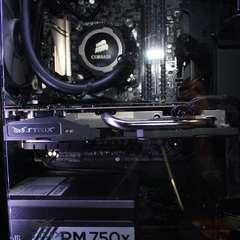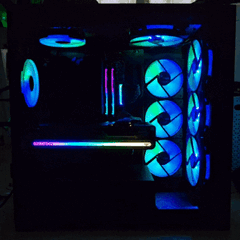-
Posts
32,175 -
Joined
-
Last visited
About Godlygamer23
Contact Methods
-
Steam
Godlygamer23
-
Battle.net
Windows10 #11805
-
Twitch.tv
https://www.twitch.tv/captainchaos57
-
Other
Epic: Godlygamer26
Profile Information
-
Interests
Astronomy, computers, physics, chemistry, etc.
-
Occupation
Quality Engineer
-
Member title
My username has aged poorly
System
-
CPU
AMD Ryzen 5 5600
-
Motherboard
MSI MPG X570 Gaming Plus
-
RAM
16GB Corsair DDR4 Memory @ 3200
-
GPU
EVGA RTX 3070 FTW3 Ultra
-
Case
Fractal Design Define R5
-
Storage
Intel 520 240GB SSD; 2 WD Caviar Blue HDDs(1TB, 1TB); 1 WD Blue M.2 SSD(500GB) ; Seagate Barracuda ST8000DM004-2CX188 8TB HDD; 9TB NAS
-
PSU
Seasonic SS-750KM3 X-Series 750W
-
Display(s)
LG IPS234 LED LCD; Nixeus EDG27240S
-
Cooling
NZXT Kraken x62
-
Keyboard
CM Storm Trigger
-
Mouse
Corsair SCIMITAR PRO
-
Sound
Sound Blaster Z, Beyerdynamic DT 770 Studio 80ohm
-
Operating System
Windows 10 Pro 64-bit
-
Phone
iPhone XR 64GB
Godlygamer23's Achievements
-
First it's important to understand what "System" means in this context, and see how it's related to other programs, if it is at all. Try downloading and using Glasswire to see what is using so much data.
-
My current laptop refuses to update to the new Windows 10
Godlygamer23 replied to BigChungus1009's topic in Troubleshooting
What updates are you trying to install? -
As mentioned above, instead of firing a shotgun from the hip to see what you hit, use a tool such as WinDirStat(what I personally use) or a similar utility to see what is consuming all that space, so you can target your efforts.
-
TRIM is a command sent to the SSD to inform it that the block of data is stale and can be permanently erased. That's all it does. The rest of it is up to the drive itself to manage it. Defragging is bringing files that are broken up back together as much as possible to create as much contingency as possible(least amount of breaks in between). Both SSDs and hard drives benefit from this, but SSDs far less so due to their much lower latency, and in most cases, it's best to just leave the drive operate as it is designed to do - assuming it's programmed properly at a firmware level, that is. Otherwise, avoid using or buying that drive lol. Do not randomly defrag SSDs. Windows will do it as needed. Defragging SSDs on a regular basis consumes writes. The overall percentage of capacity usage is what matters here since the drive still has to manage the data. Partitions make zero difference here.
-
If that were true, then the Optimize Drives utility is largely useless, and any mention of "[number of days] since last retrim" within the program is totally useless information, and is objectively untrue. So therefore, I don't think that happens. Windows does schedule TRIM commands to be sent based on what it considers to be required, but it's unlikely it does it for every single deletion operation. However, if you have objective evidence to the contrary, I'll certainly change my view.
-
Razer fined for their supposedly N95 Zephyr RGB Mask.
Godlygamer23 replied to Mope El Two's topic in Tech News
Here's a review of this product when it first came out: https://arstechnica.com/gadgets/2021/11/review-i-wore-razers-zephyr-n95-mask-for-two-weeks-so-you-dont-have-to/ Turns out it really wasn't N95 certified. -
1.) Did you provide support to the cooler during the tightening process? 2.) Did you tighten the hardware until it couldn't turn anymore with reasonable force? 3.) How much thermal paste did you apply, and did you follow any specific pattern or spread method?
-
How did you ensure the AIO is making proper contact?
-
What does the component look like?
-
Who put the engine into the car? Yamaha, or some other manufacturer(including the 'bozo' mentioned in this quote)? Yamaha only makes bikes, so as it stands, Yamaha would be off the hook on the surface. However, if Yamaha had some internal documentation that said "officially it can reach 6000RPMs max, but many of the engines will survive 9000 for x amount of time", they may hold some of the blame, especially if someone made a car with that specific engine and contacted Yamaha about the true RPM limit of the engine. To the customers, the immediate manufacturer or individual would be at fault. However, that's only one layer of the onion that would be unraveled.
-
The nerve of some people. lol.
-
Hoses** not cables. Otherwise, I agree that number 1 should be adjusted such that the hoses are pulled further away from the fans. Even if it clears it now, once the pump starts to run, it may cause the hoses to contact the fan blades. Thermal expansion is also a potential factor here.
-
If the element literally says 'dead pixel', it's both not a bug from browser engines, and most definitely on purpose.























.png)
